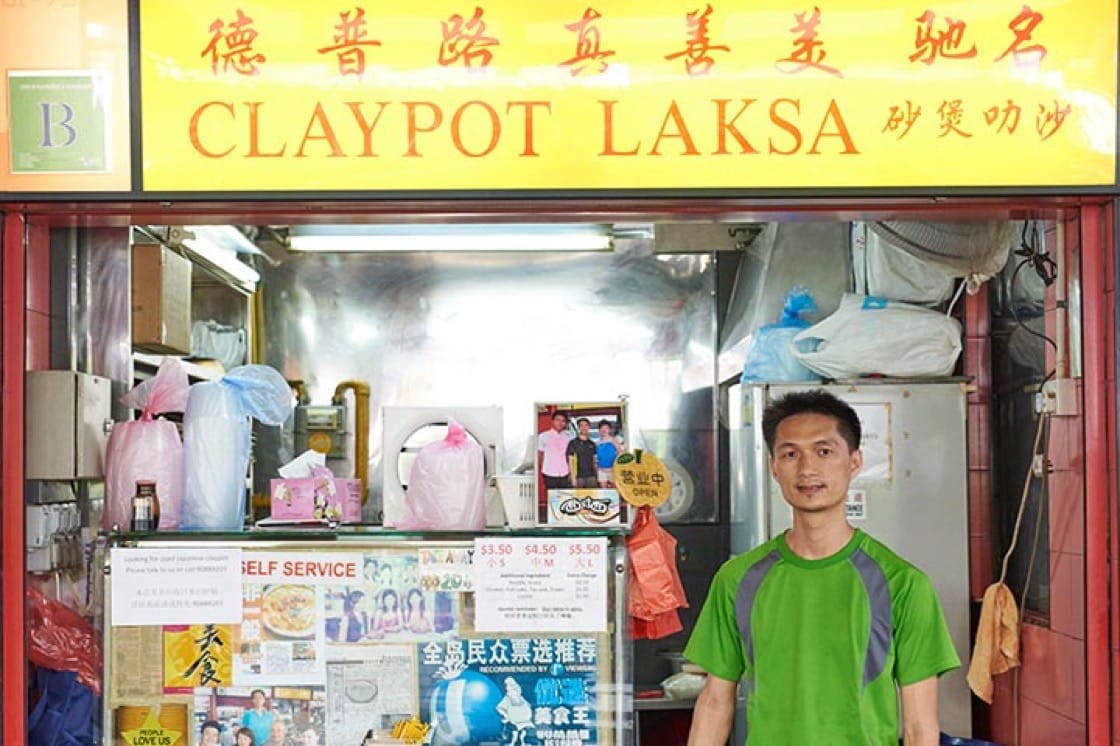Whether luxuriating in a rich broth or tossed in a heady sauce, there are few things more comforting than a one-dish bowl of noodles. Here, we round-up eight Bib Gourmand-awarded eateries offering signature noodle dishes worth traveling across the island for.

328 Katong Laksa (Joo Chiat)
In 2013, the founders of this humble laksa stall in Katong beat celebrity chef Gordon Ramsay in a much-publicized Hawker Hero challenge by making a better bowl of laksa. The defining characteristics of Katong Laksa are the thick rice vermicelli noodles and rich coconut gravy.Combine these with plump shrimp, fish cakes and fresh cockles—enhanced with the aroma of curry leaves—and you get a bowl of internationally renowned laksa.
Famous Sungei Road Trishaw Laksa
While this stall in Hong Lim Market & Food Center is known for its laksa, those in the know also patronize the stall for its tangy, addictive mee siam that is laced with a not-so-secret ingredient: fruit juice. In place of the usual tamarind water is a special blend of fruit juices that cuts through the richness of the mee siam gravy and lends a fruity fragrance to the dish.
Depot Road Zhen Shan Mei Claypot Laksa
This milky, spicy noodle dish is best savored piping hot in a rustic claypot. The time-honored gravy recipe here features a mix of ingredients such as chilli padi, blue ginger, turmeric, belachan, shrimp paste and lemongrass fried first to release their fragrance, then slow cooked for over two hours. Freshly squeezed coconut milk gives the gravy a rich, thick texture and helps it cling onto every rice noodle strand.Hong Kee Beef Noodle
Hong Kee serves up Hainanese-style beef noodles in both its soup and dry forms. In the soup version, the noodles swim in a clear but rich beef stock that is cooked for 24 hours. Though the soup version is delicious, it's the dry form that pulls in the crowds with its succulent beef slices and gooey, starchy gravy topped with salted vegetables and accompanied by a piquant chile sauce.
Hong Heng Fried Sotong Prawn Mee
The magic of Hong Heng's prawn noodles lies in its prawn stock, which the owner ladles not one but two full scoops of into the wok for a plate of noodles. He then cooks the noodles in the stock of beautiful briny prawns long enough for the flavors and aromas to permeate the alkaline and white noodles, resulting in a hearty, delicious plate.Sin Huat Eating House
For those willing to brave the infamously long waits and surly service, the reward is a plate of crabby goodness so divine you’d be also willing to overlook it’s $77 per kilogram price tag. The rice vermicelli is braised in an umami-laden stock redolent of crab, while the crabs, still in their shells, remain meaty and sweet.






















